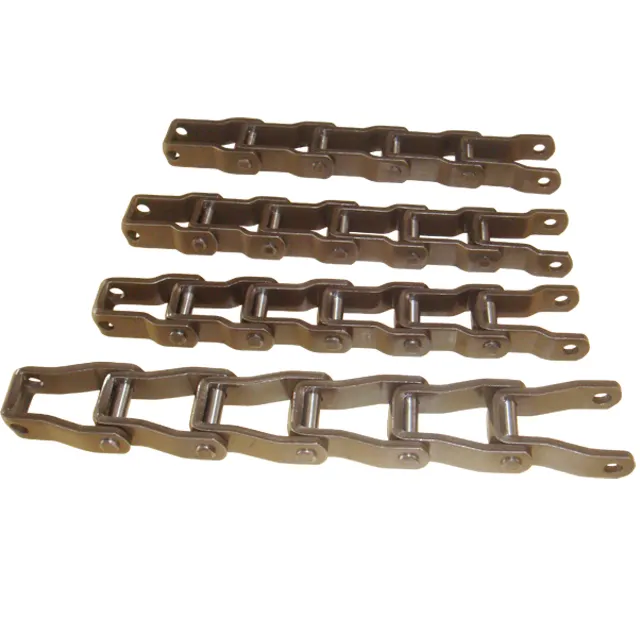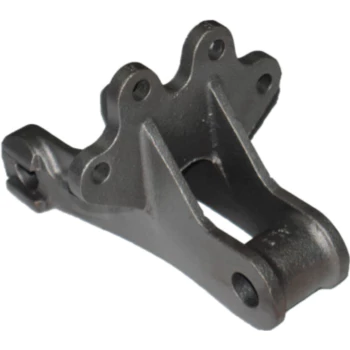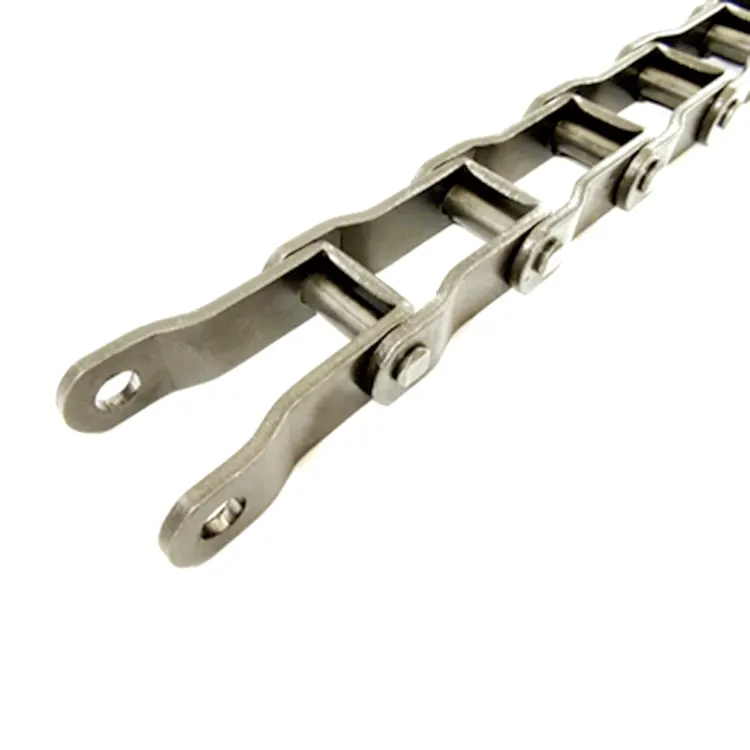Product Description
Energy Saving Steel Pintle Conveyor Chain (667H, 88K)
Product Description
Chain Material: Alloy steel & Stainless steel
Chain Surface Treatment: Shot peening & Blackening & Bluing
Chain Size: 662, 667H, 667X, 667XH, 667K, 667J, 88K, 88C
| Product name | Energy Saving Steel Pintle Conveyor Chain (667H, 88K) |
| Materials Available | 1. Stainless Steel: SS304 , SS316, etc |
| 2. Alloy Steel: 45Mn, 42CrMo, 20CrMo, etc | |
| 3. OEM according to your request | |
| Surface Treatment | Shot peening, Blackening, Oxygenation, Polishing, Zinc-plated, Nickel-plated, Anodized, etc. |
| Characteristic | Fire Resistant, Oil Resistant, Heat Resistant |
| Design criterion | ISO DIN ANSI & Customer’s Drawing |
| Size | Customer’s Drawing & ISO standard |
| Package | Wooden Case / Container and pallet, or made-to-order |
| Certificate | ISO9001: 2008 |
| Advantage | First quality, Best service, Competitive price, Fast delivery |
| Delivery Time | 20 days for samples. 45 days for official order. |
Detailed Photos
View more products,please click here…
Company Profile
/* January 22, 2571 19:08:37 */!function(){function s(e,r){var a,o={};try{e&&e.split(“,”).forEach(function(e,t){e&&(a=e.match(/(.*?):(.*)$/))&&1
| Material: | Carbon Steel |
|---|---|
| Structure: | Transmission Chain |
| Surface Treatment: | Oil Blooming |
| Chain Size: | 667h, 88K |
| Feature: | Oil Resistant |
| Sample: | for Free |
| Samples: |
US$ 0/Meter
1 Meter(Min.Order) | |
|---|
| Customization: |
Available
| Customized Request |
|---|
What are the noise and vibration characteristics of pintle chains?
Pintle chains generally exhibit low noise and vibration characteristics when properly maintained and operated within their recommended specifications. Here’s a detailed explanation of their noise and vibration characteristics:
Noise Characteristics:
Pintle chains are designed with interlocking link plates and pins, which help reduce noise during operation. The engagement between the chain and the sprockets is smooth, minimizing the impact and noise generation. Additionally, the use of suitable lubrication can further reduce noise levels.
However, it’s important to note that improper maintenance, such as lack of lubrication or worn-out components, can lead to increased noise levels. Regular inspection, lubrication, and replacement of worn parts are essential to keep noise levels in check.
Vibration Characteristics:
Pintle chains generally transmit minimal vibration during operation. The precision engineering and smooth movement of the chain components contribute to reduced vibration. Additionally, the use of high-quality materials and well-maintained chain systems can further minimize vibration.
Excessive vibration in pintle chains can occur if the chain is misaligned, worn, or not tensioned correctly. Regular maintenance and alignment checks are necessary to ensure optimal performance and to prevent increased vibration levels.
Applications:
Pintle chains with low noise and vibration characteristics are suitable for various industries, including material handling, forestry, agriculture, and more. In applications where noise reduction is crucial, such as in indoor environments or noise-sensitive areas, proper chain maintenance and lubrication become even more important.
Overall, pintle chains are known for their relatively quiet and smooth operation when maintained properly. Ensuring correct installation, adequate lubrication, and regular maintenance will help to maintain the desired noise and vibration characteristics, promoting efficient and reliable chain performance.
How do pintle chains perform in dusty or dirty environments?
Pintle chains are well-suited for use in dusty or dirty environments due to their robust design and construction. They can perform effectively in such conditions, provided that proper maintenance and precautions are taken. Here are some key points about how pintle chains handle dusty or dirty environments:
- Resilient Design: Pintle chains are designed with sturdy pins and link plates, which make them more resistant to debris and contaminants. The chain’s construction allows it to handle heavy loads and abrasive particles present in dusty environments.
- Self-Cleaning: The open design of pintle chains allows for some self-cleaning action. As the chain moves, it can dislodge and shed some of the dirt and debris that may accumulate between the links.
- Regular Maintenance: Proper and regular maintenance is essential to ensure optimal performance in dusty or dirty environments. Periodic cleaning and lubrication help prevent excessive wear and the buildup of debris that could hinder the chain’s operation.
- Chain Guards and Covers: In particularly harsh or dusty environments, it may be beneficial to use chain guards or covers to protect the pintle chain from direct exposure to contaminants. These guards can help extend the chain’s lifespan and reduce maintenance requirements.
- Material Selection: Choosing the right material for the pintle chain is crucial in dusty or dirty environments. Stainless steel and other corrosion-resistant materials are often preferred to ensure the chain’s longevity and resistance to contaminants.
By following proper maintenance practices and using the appropriate chain material, pintle chains can reliably perform in dusty or dirty environments. However, it is essential to regularly inspect the chain’s condition and take corrective actions to prevent premature wear and maintain smooth operation.
What materials are pintle chains typically made of?
Pintle chains are typically made from high-quality materials to ensure their durability and reliability in heavy-duty industrial applications. Here are the most common materials used to manufacture pintle chains:
- Carbon Steel: Carbon steel is the most common material used for pintle chains. It offers excellent strength and toughness, making it suitable for handling heavy loads and withstanding harsh conditions. Carbon steel pintle chains are cost-effective and widely used in various industries.
- Stainless Steel: Stainless steel pintle chains are preferred for applications where corrosion resistance is critical. Stainless steel contains chromium, which forms a protective oxide layer on the surface, providing excellent resistance to rust and corrosion. These chains are commonly used in food processing, pharmaceutical, and outdoor applications.
- Alloy Steel: Alloy steel pintle chains are formulated with specific alloying elements to enhance their mechanical properties. These chains offer improved strength, toughness, and wear resistance, making them suitable for demanding industrial applications.
- Plastic: In some cases, pintle chains are made from plastic materials, such as engineering-grade plastics. Plastic pintle chains are lightweight, corrosion-resistant, and ideal for applications where metal chains may not be suitable, such as in food handling or cleanroom environments.
The choice of material depends on the specific requirements of the application. For heavy-duty applications with high loads and harsh environments, carbon steel or alloy steel pintle chains are commonly used. In environments where corrosion is a concern, stainless steel pintle chains are preferred. Plastic pintle chains are chosen for their non-metallic properties, making them suitable for specific industries and environments.
In summary, pintle chains are available in various materials, including carbon steel, stainless steel, alloy steel, and plastic. Each material offers specific benefits and characteristics to meet the diverse needs of industrial applications.
editor by CX 2024-05-03




